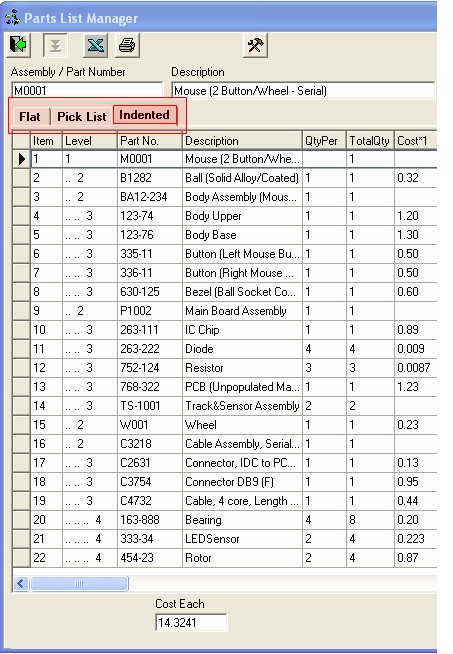The Pvalue approach involves determining likely or unlikely by determining the probability assuming the null hypothesis were true of observing a more extreme test statistic in the direction of the alternative hypothesis than the one observed. If the Pvalue is small, say less than (or. 11 The data obtained during method validation and verification should be considered 208 covered by good anything practices (GxP) requirements and are expected to follow the principles 209 of good data and record management practices (2). StatisticsMethods of Data Collection. From Wikibooks, open books for an open world Statistics. Jump to navigation Jump to search. Subjects in Modern Statistics; Why Should I Learn Statistics? Definition Methodology simply refers to the methods we use to conduct an investigation. Systematic Research Research in psychology is not haphazard. Following the basic principles of science there. Basic Principles of Statistical Inference Kosuke Imai Department of Politics Princeton University POL572 Quantitative Analysis II Spring 2016 Kosuke Imai. Statistical methods in the analysis of epidemiological data. 1 Introduction We are now in a position to establish a method for judging how large a sample we may need to estimate a population mean with a given precision, at least when random sampling is used. The key to the problem is the value of the test statistic Z which has to be. SPRT This method of analysis is not often used, which is a pity because it is actually quite good. Anderson Statistical Software Library A large collection of free statistical software It uses aggregate data from the 50 U. states to teach the principles of distribution, correlation, and regression. This web site contains notes and materials for an advanced elective course on statistical forecasting that is taught at the Fuqua School of Business, Duke University. It covers linear regression and time series forecasting models as well as general principles of thoughtful data analysis. The United Nations Statistics Division is committed to the advancement of the global statistical system. We compile and disseminate global statistical information, develop standards and norms for statistical activities, and support countries' efforts to strengthen their national statistical systems. Forecasting: Principles and Practice. Actually, fitted values are often not true forecasts because any parameters involved in the forecasting method are estimated using all available observations in the time series, including future observations. based on the following statistic \[ Q T \sumk1h rk2. the observed difference of the means is related to the variability of that difference resulting in a t statistic: This problem does not occur when correlation analysis is used since this method allows explicitly incorporating the gradual increase and decrease of the expected BOLD signal. Cohen's d statistic is a type of effect size. An effect size is a specific numerical nonzero value used to represent the extent to which a null hypothesis is false. As an effect size, Cohen's d is typically used to represent the magnitude of differences between two (or more) groups on a given variable, with larger values representing a greater differentiation between the two groups on that. Ethics sensitivity, the Is your action compatible with your own basic ethical values? Is the action compatible with ethical principles? Categories of Moral Senses (Jonathan Haidt, Social and Moral the statistical consultant must have at their familiar disposal a trusted method for evaluating what can be very complicated challenges to. STATISTICS 601 Advanced Statistical Methods Mark S. Kaiser Department of Statistics Iowa State University Fall 2005. ii Is a method advanced if it demands a certain level of mathematical sophistication to employ? Is a method advanced simply because it does not fall into the body of topics usually contained in courses taught at Research design can be daunting for all types of researchers. At its heart it might be described as a formalized approach toward problem solving, thinking, a Principles of Statistics was created primarily for the student of natural sciences, the social scientist, the undergraduate mathematics student, or anyone familiar with the basics of mathematical language. Online data science analytics: 90 courses and certificates. Since 2002, pioneer in online statistics education. Statistical Process Control (SPC) is an industrystandard methodology for measuring and controlling quality during the manufacturing process. Quality data in the form of Product or Process measurements are obtained in realtime during manufacturing. Statistical Principles Explanations Social Research Statistical Principles There are a number of basic principles of statistics that need to be understood when doing social research. Statistics, Data, and Statistical Thinking. This method of sampling begins with the listing of the population. Then, a decision is made as to a systematic way of choosing members. For example, if it is decided to sample 1 of every 50, the investigator would randomly select one of the first 50 and then continue selecting every 50th member. Ethics and Statistics Andrew Gelman, Column Editor A n ethics problem arises when you are considering an action that (a) benefits you or some cause you support, (b) hurts or reduces benefits to others, and (c) violates some rule. Other definitions are possible; there is a vast lit Official Statistics and Statistical Ethics: Selected Issues William Seltzer Fordham University, Department of Sociology and Anthropology 441 East Fordham Road The term econometrics is believed to have been crafted by Ragnar Frisch ( ) of Norway, one of the three principal founders of the Econometric Society, rst editor of the journal Econometrica, and cowinner of the rst Nobel Memorial Prize in Economic Sciences in 1969. statistical techniques for forensic accounting understanding the theory and application of data analysis saurav k. dutta On Using and Computing the Kappa Statistic Emmett Ientilucci, In this short report, we present the math, followed by an example, on how to use and interpret the Statistical process control (SPC) is a method of quality control which employs statistical methods to monitor and control a process. This helps to ensure that the process operates efficiently, producing more products with less waste (rework or scrap ). DOWNLOAD ANY SOLUTION MANUAL FOR FREE Showing of 1007 messages. DOWNLOAD ANY SOLUTION MANUAL FOR FREE Principles of Macroeconomics 6th ed. Gregory Mankiw Solutions manual and Rudelius and SM for Concise Managerial Statistic by Kvanli, Pauvr, and Kneeling, and also for Environmental Science: Earth as Living Planet 8th. Sampling Risks There are two types of sampling risks, first is the risk of incorrect acceptance of the research hypothesis and the second is the risk for incorrect rejection. These risks pertain to the possibility that when a test is conducted to a sample, the results and conclusions may be different from the results and conclusions when the. Learn more about correlation, a statistical technique that shows how strongly pairs of variables are related. Request your free quote from Creative Research. This review introduces oneway analysis of variance, which is a method of testing differences between more than two groups or treatments. Multiple comparison procedures and orthogonal contrasts are described as methods for identifying specific differences between pairs of treatments. Applied Statistical Methods Larry Winner Department of Statistics University of Florida February 23, 2009 The determination of the calcium carbonate content with the Scheibler standard method is compared with the simple and more rapid acidneutralization method using one and the same sample. The results are given in Table 62. 11 basic principles have been established(1) which are decisive for stability testing and which are applicable to all stages of development, on all dosage forms The 11 principles are as follows: analytical method calibration calculation documentation principles, vague and conjectural. JeanEtienne Dominique Esquirol, an early French psychiatrist, (The SE is an inferential statisticit is about a 68 confidence intervalnot a descriptive Altman D. Statistical Analyses and Methods in the Published Literature: the SAMPL Guidelines. 2013 These four principles of fitness training are applicable to individuals exercising at low to moderate training levels and may be used to establish guidelines for both cardiorespiratory and resistance training. There are limitations with heart rate and the heart rate reserve method. Calculate the statistic of interest, from your sample of n observations, and obtain bootstrap estimates of that statistic in same way as the percentile method (above). Estimate the bias in your bootstrap estimates (p b ) as the proportion of bootstrap estimates whose value are. Definition of statistical methods: Mathematical concepts, formulas, models, techniques used in statistical analysis of random data. In comparison, deterministic methods are used where the data is easily reproducible or where its. Statistical Principles for Clinical Trials Step 5 NOTE FOR GUIDANCE ON STATISTICAL PRINCIPLES FOR CLINICAL TRIALS (CPMPICH ) TRANSMISSION TO CPMP February 1997 RELEASE FOR CONSULTATION February 1997 COMMENTS REQUESTED BEFORE June 1997 FINAL APPROVAL BY CPMP March 1998 Statistics: Principles and Methods, 7th Edition provides a comprehensive, accurate introduction to statistics for business professionals who need to learn how to apply key concepts. The chapters include realworld data, designed to make the material more relevant. The numerous examples clearly demonstrate the important points of the methods. The Method of Least Squares Steven J. Miller Mathematics Department Brown University Providence, RI Abstract The Method of Least Squares is a procedure to determine the best t line to data; the STATISTICAL PRINCIPLES FOR PROSPECTIVE STUDY PROTOCOLS: DESIGN, ANALYSIS, AND REPORTING. Thus, the aim of this clinical commentary is to describe and explain the statistical principles for trial protocols in terms of design, analysis, and reporting of findings. Randomized controlled trials (RCTs) are considered the ultimate method for. Research methods are split broadly into quantitative and qualitative methods. This page provides an introduction to the broad principles of qualitative and quantitative research methods, and the advantages and disadvantages of each in particular situations. Sometimes you may wish to use one single method, whether quantitative or. DOWNLOAD STATISTICS PRINCIPLES AND METHODS 6TH EDITION SOLUTIONS MANUAL Bayesian statistics: principles and benefits The Bayesian method In Bayesian statistics we create a statistical model to link data to parameters The methods used to specify discrete prob. A statistic is a number that can be computed from the An. The American Statistical Associations Ethical Guidelines for Statistical Practice are intended to help statistics practitioners make decisions ethically. Additionally, the ethical guidelines aim to promote accountability by informing those who rely on statistical analysis of the standards they should expect. Chapter 7 covers experimental design principles in terms of preventable threats to the acceptability of your experimental conclusions. Chapter 6 The ttest and Basic Inference Principles The ttest is used as an example of the basic principles of statistical inference. One of the simplest situations for which we. An Examination of the Moneyball Theory: A Baseball Statistical Analysis. Submitted by: Ehren Wassermann, Daniel R. Wilson A Barry Joyner If the Moneyball method is proven as significant, it could revolutionize the baseball industry. Science, Sports Management, Sports Studies and Sports Psychology Comments Off on An. Statistics is also a method, a way of working with numbers to answer puzzling questions about both human and nonhuman phenomena. Questions answerable by using t Principles of Testing Quiz: Stating Hypotheses; The Test Statistic; Quiz: The Test Statistic Method of Statistical Inference. Statistics is also a method, a way of working with. A video summary of chapter 1 in Perdisco's Introductory Statistics textbook. To find out more, visit.











